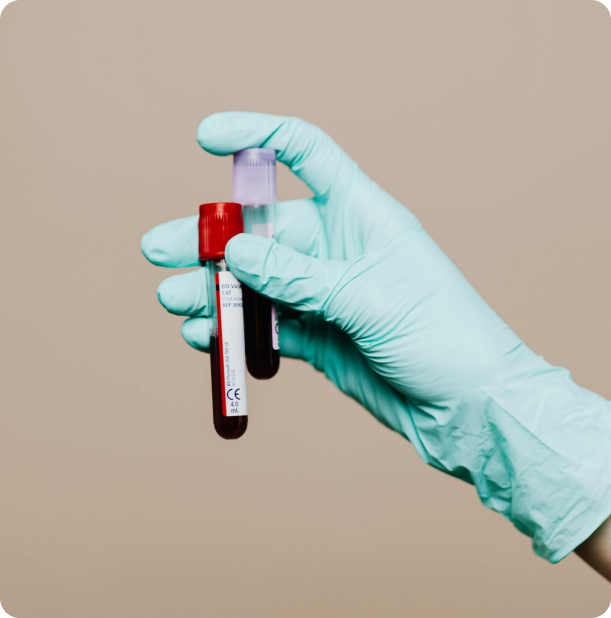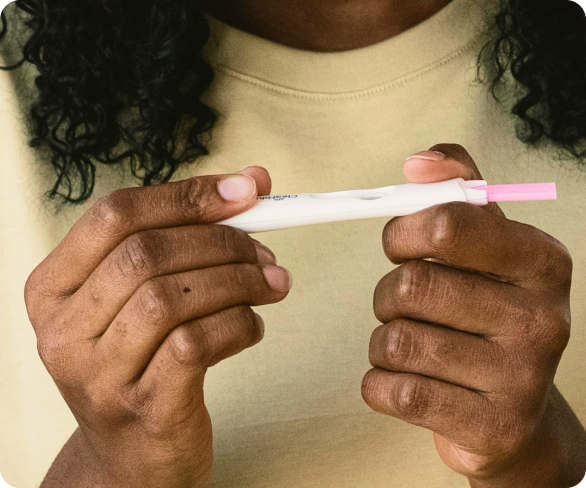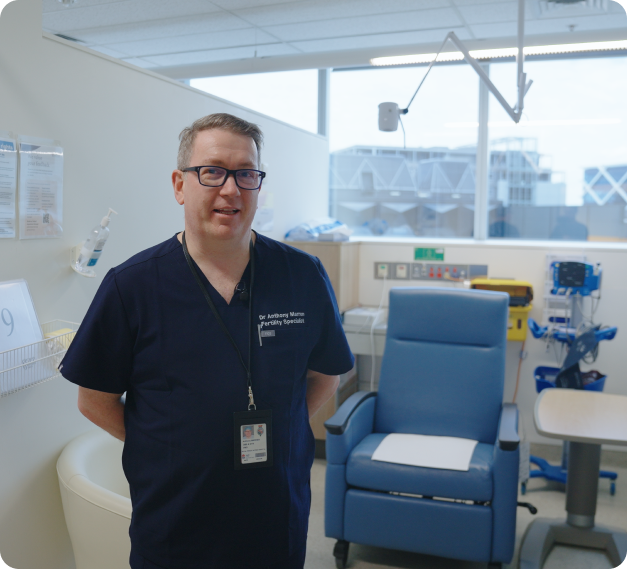
The fallopian tubes are an essential part of the female reproductive system, connecting the ovaries to the uterus. These narrow, flexible tubes play a vital role in the process of conception. They capture the egg released from the ovary during ovulation, facilitate fertilisation by bringing the egg and sperm into close proximity and transport the resulting embryo to the uterus for implantation.
Proper function of the fallopian tubes is critical for natural conception, making their health and condition an important aspect of fertility.
Damage to the fallopian tubes can impair their ability to capture the egg or propel the early embryo into the uterus, resulting in tubal infertility. This damage may occur due to various factors, including infections, surgery, and medical conditions.
Proper function of the fallopian tubes is critical for natural conception, making their health and condition an important aspect of fertility.

Many people are unaware that untreated sexually transmissible infections (STIs), such as chlamydia or gonorrhea, can significantly impact fertility. These infections can cause inflammation, scarring, or blockages in the fallopian tubes, a condition often referred to as pelvic inflammatory disease (PID). Even without noticeable symptoms, these changes can prevent the egg and sperm from meeting or hinder the embryo’s journey to the uterus.
Surgeries in the pelvic area, such as those for ectopic pregnancies, appendicitis, or ovarian cysts, can lead to the formation of scar tissue (adhesions). These adhesions can obstruct or distort the fallopian tubes, making it difficult for them to function properly and increasing the risk of infertility or subsequent complications like ectopic pregnancy.
Endometriosis occurs when tissue similar to the lining of the uterus grows outside it, often on the ovaries, fallopian tubes, or other pelvic structures. This condition can result in inflammation, adhesions, or even blockages in the fallopian tubes. These changes not only affect the tubes' ability to transport the egg and embryo but can also alter the overall pelvic environment, making conception more challenging.
Assessing the patency (openness) of the fallopian tubes is essential in diagnosing tubal infertility. A range of diagnostic tools is available, each offering unique insights into the condition of the fallopian tubes and the pelvic environment. These include:

A pelvic ultrasound is often used as an initial, non-invasive screening tool in the evaluation of fertility. While it does not directly confirm tubal patency, it can identify conditions that indirectly affect the tubes, such as hydrosalpinx (fluid-filled tubes), pelvic masses, or uterine abnormalities. Ultrasound is painless, widely accessible, and provides valuable baseline information about reproductive anatomy.
HyCoSy is a specialised ultrasound procedure that directly assesses the fallopian tubes. A sterile fluid or contrast agent is injected through the cervix into the uterus. Using an ultrasound probe, observations are made to see if the fluid travels through the fallopian tubes and spills out at their ends, indicating patency. HyCoSy is minimally invasive, involves no radiation, and is generally well-tolerated. It is often the preferred first-line test for tubal evaluation.
HSG is a diagnostic X-ray procedure that evaluates the uterus and fallopian tubes. During this test, a dye is injected into the uterus and fallopian tubes, and X-ray images are taken to assess for blockages or structural issues. HSG is particularly useful for identifying abnormalities within the uterine cavity, such as polyps or fibroids, alongside assessing tubal patency.
Laparoscopy is a surgical procedure considered the "gold standard" for evaluating tubal infertility and other pelvic conditions. Under general anesthesia, a small camera is inserted through an abdominal incision, allowing direct visualisation of the reproductive organs. Dye is injected through the cervix into the uterus, and the surgeon observes whether it passes through the fallopian tubes and spills into the pelvic cavity. Laparoscopy not only confirms tubal patency but also identifies and treats other conditions like endometriosis, adhesions, or pelvic scarring, providing a comprehensive diagnostic and therapeutic option.

In many cases, blocked tubes do not cause noticeable symptoms, which can delay diagnosis until fertility issues arise. However, some women may experience the following signs or symptoms such as:
If the fallopian tubes are blocked or damaged, surgery may be required to restore their function and improve the chances of natural conception. Procedures such as laparoscopy can remove blockages, repair the tubes, or treat underlying conditions like endometriosis. The primary goal of these surgeries is to restore the normal function of the fallopian tubes, enabling the egg and sperm to meet and increasing the likelihood of natural pregnancy.

A hydrosalpinx is a condition where the end of the fallopian tube is damaged or ‘clubbed’ which prevents normal fluid produced by the tube from being released and reabsorbed into the abdominal or pelvic cavity. As a result, the tube fills with fluid (hydro = water, salpinx = tube), which can reflux back into the uterine cavity.
This condition is particularly significant for fertility, as data from IVF cycles indicate that a hydrosalpinx can reduce pregnancy rates by approximately 50%. This reduction occurs because the fluid can interfere with embryo implantation in the uterus.
Antibiotics may be prescribed for approximately one week before an embryo transfer in IVF cycles. However, the evidence supporting this approach is very limited, and its effectiveness remains uncertain.
In some cases, surgeons may attempt to repair the fallopian tube to restore its function. If repair is not feasible, the affected tube may be surgically removed to eliminate the negative impact of the hydrosalpinx fluid on fertility.

Tubal surgery has the advantage of preserving the capacity for natural conception. The main risks include a high chance of recurrence and future ectopic pregnancy. In certain circumstances, it may be best to remove or ‘clip’ the fallopian tubes.
For women with severely damaged or removed fallopian tubes, in vitro fertilisation (IVF) is often recommended. In IVF, eggs are taken from the ovaries and fertilised with sperm in a lab. The embryos are then placed directly into the uterus, skipping the fallopian tubes entirely.

Treating tubal infertility through surgery or IVF involves certain risks.
Surgical procedures like laparoscopy or tubal repair can lead to infection, bleeding, or damage to nearby organs, as well as an increased risk of ectopic pregnancy, which requires urgent care.
In cases of severe tubal damage, surgery may not fully restore fertility, making IVF a recommended alternative. While IVF bypasses the fallopian tubes, it carries risks such as ovarian hyperstimulation syndrome (OHSS), multiple pregnancies, and emotional or financial stress.

The journey to pregnancy is different for everyone. I’ve devoted my life to making hopeful parents feel heard, supported and understood. My job (and passion) is to help you make informed and empowered choices on your fertility health.
Through careful evaluation and a personalised treatment plan we can minimise any risks and improve the likelihood of a successful outcome.
Tubal infertility is caused by blockages or damage to the fallopian tubes due to infections, endometriosis, past surgeries, or ectopic pregnancies.
Diagnosis involves imaging tests like a hysterosalpingogram (HSG) or HyCoSy, which evaluate the openness of the tubes.
HyCoSy (Hysterosalpingo-Contrast Sonography) is a non-invasive ultrasound test that uses contrast dye to assess tubal patency and uterine abnormalities.
Mild cases may be managed with medication or tubal flushing, but significant blockages often require surgical intervention.
IVF is the most effective treatment when both tubes are blocked, but surgery may be an option if only one tube is affected.
Seeking a referral from a GP or visiting a fertility clinic like Dr. Anthony Marren’s practice can help find expert care.
Risks include scarring, infection, and a potential increase in ectopic pregnancy rates. Your doctor will assess the benefits and risks before recommending surgery.
Understanding the emotional journey couples endure when they have difficulty conceiving or recurrent pregnancy loss is essential to my approach.
Creative Advertising by Kiin Agency.